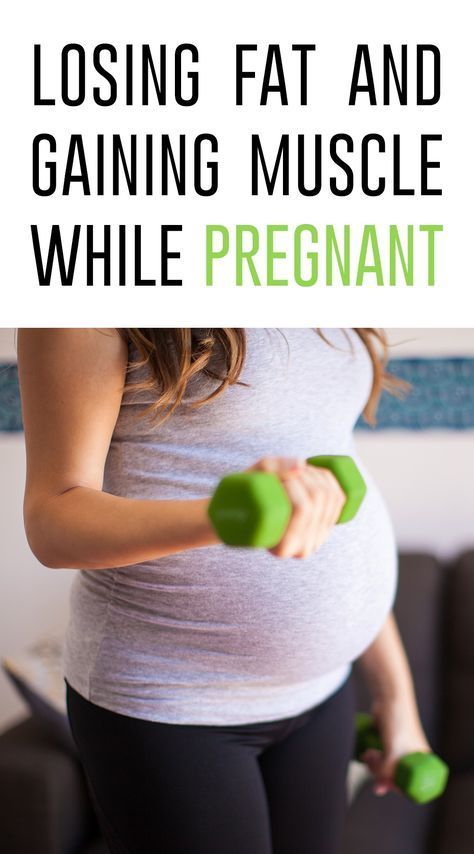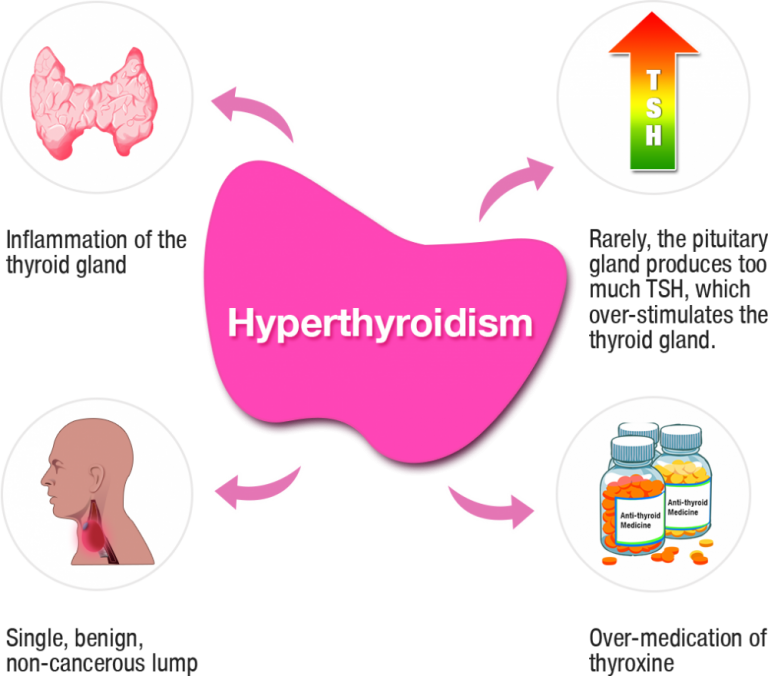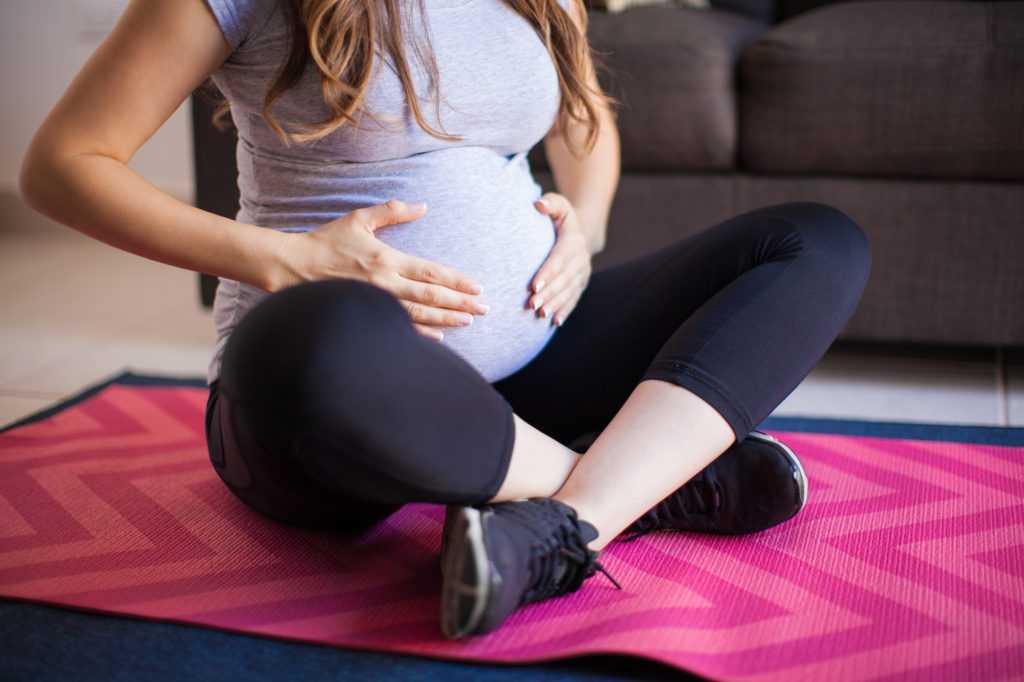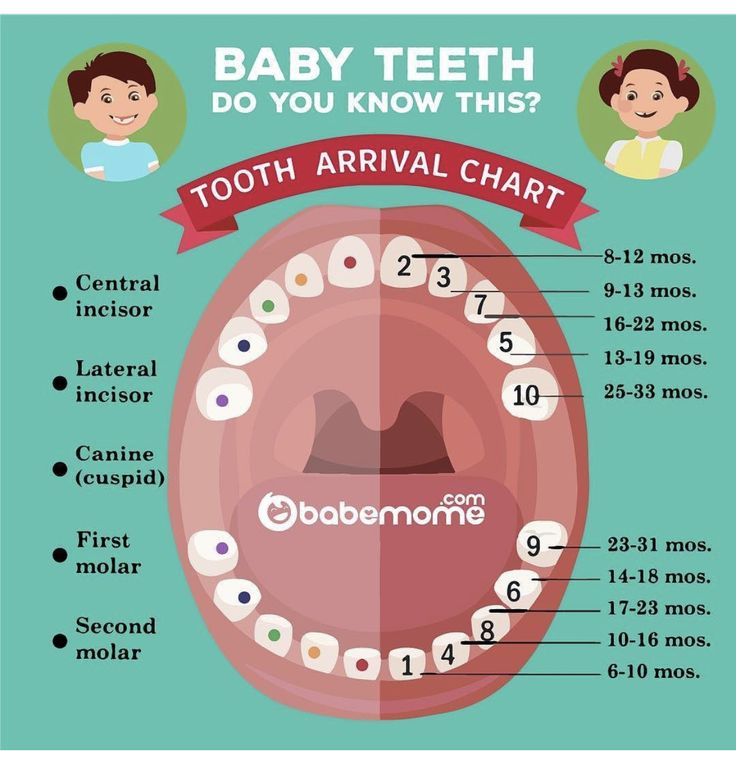What is normal swelling in pregnancy
When to Worry (and What’s Perfectly OK)
In the early pregnancy, you may beam from the inside out with bright, rosy skin and hair that brilliantly glistens for days. Then, one day, something takes the wind out of your prego-beauty sails — you look down and don’t even recognize the two extremely puffy cankles beneath you.
Unfortunately, swelling falls into that perfectly normal category of pregnancy side effects. In fact, most expecting mamas experience it. But why?
Let’s look at what causes swelling during pregnancy and offer some tips to beat the bloat with comfort and confidence.
And, a note of caution: There are a few instances in which swelling during pregnancy is concerning. We’ll also explain when it could be a sign of a more serious health condition.
During pregnancy, your body does some pretty herculean things, and there’s a lot that, well, increases. One of them is the sheer amount of fluid in your body. While pregnant, your total body water volume can increase by up to 8 liters— that’s over 33 cups!
Meanwhile, your plasma volume leaps 30 to 50 percent, which means your total blood volume increases as well.
So, where does all that fluid go? Good question.
Some of the water stays within your cells to help them function. The rest accumulates outside of your cells to enhance oxygen delivery, clear waste, and control electrolyte flow.
The increase in plasma is in response to the growing needs of the placenta and your maternal organs, as your blood volume increases to deliver all that your baby needs to develop.
As your little one inches closer to birth in the third trimester, your blood volume reaches its peak. Hint: That’s why your swelling (among other slight unpleasantries) can peak around this time.
But that’s not all.
The massive increase in body fluids during pregnancy is coupled with increasing sodium levels. And most of us have seen the effects of what a little too much takeout pizza can do.
Sodium affects how your body absorbs and processes water. Even the slightest rise in sodium may cause you to feel the power of the “puff.”
It’s completely normal to shed a little tear the day your rings and favorite heels don’t fit anymore (sigh). A little gradual swelling in your fingers, legs, ankles, and feet throughout pregnancy is part of the journey.
A little gradual swelling in your fingers, legs, ankles, and feet throughout pregnancy is part of the journey.
You may find that your swelling tends to worsen toward the end of the day. This is because the extra fluid in your body can gather in the parts of your body farthest from your heart. A hotter, humid day or a lot of standing can contribute to some normal swelling, too.
Moving into the second and third trimesters, more pressure from your little one’s growing size — in addition to more blood volume — may further affect blood flow in your legs, ankles, and feet, causing you to experience even more swelling.
Tips to relieve normal pregnancy swelling
Sometimes, swelling may be as inevitable as that supersonic sense of smell and burning indigestion that you take in stride with the pure joys of pregnancy. However, here are a few things that you can do to help prevent or ease it.
- Elevate your feet at a level above your heart throughout the day, as this helps the fluid circulate back to your heart.
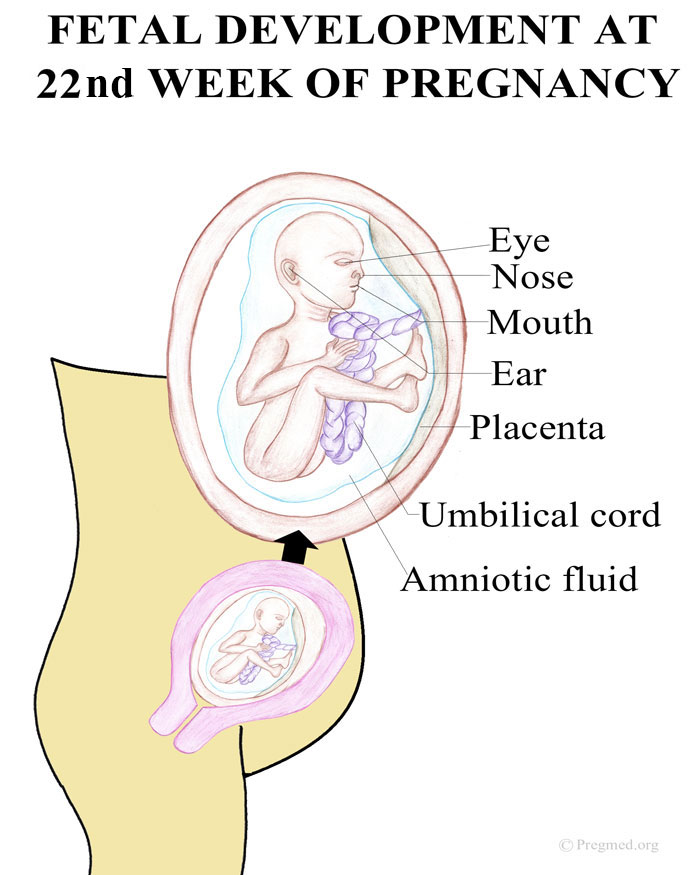
- Drink more water to flush extra fluid and sodium out of your body.
- Wear compression stockings to improve circulation, especially if you’re taking a long flight.
- Avoid being outdoors in very hot and humid weather.
- Take frequent breaks to elevate your feet when standing for long periods.
- Avoid heels and wear comfortable, breathable, and supportive shoes.
- Eat more foods with potassium, such as bananas and avocados, to flush out sodium and increase urine production (yes, even more).
- Limit high salt foods, such as prepackaged meals, fast food, and chips.
We know every mama bear wants to know when to panic. The answer? Never. Panicking only boosts your emotional and physical stress. Instead, feel empowered by learning when to call your OB-GYN or midwife about swelling.
The two most concerning conditions during pregnancy that can cause swelling are preeclampsia and a blood clot.
First thing to remember: These conditions aren’t common, but the risk is real during pregnancy. Therefore, it’s important to be aware of them.
Therefore, it’s important to be aware of them.
Secondly, swelling associated with these conditions is different than the normal, gradual swelling you may experience over the course of your pregnancy.
Here’s how the swelling is different.
Preeclampsia
Preeclampsia only affects about 5 percent of pregnant women, usually only after the 20th week. The following are three main symptoms of this disorder:
- high blood pressure
- protein in the urine
- edema (a fancy word for swelling caused by excess fluid in the body)
Labs may also show abnormalities in liver enzymes and lower than normal platelet levels.
This relatively rare condition can have devastating consequences for mom and baby if not treated immediately, so it’s important to be aware of the symptoms — and swelling is one of the major ones.
Significant swelling in your hands, face, or around your eyes that comes on suddenly or gradually becomes worse should alert you to call your OB-GYN.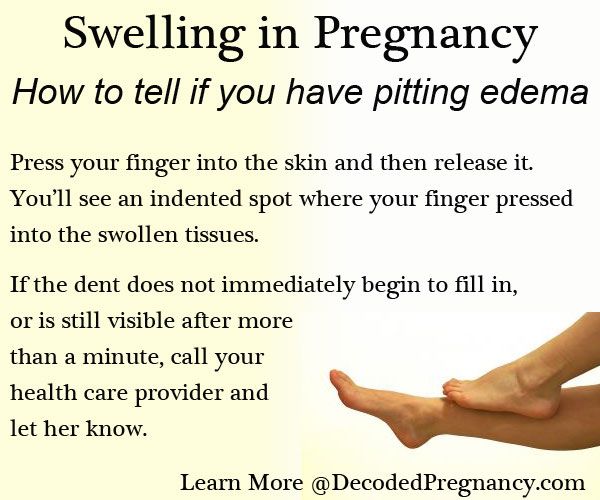 If your swelling appears “pitted” — meaning when you push on your skin, an indentation remains — this is also concerning.
If your swelling appears “pitted” — meaning when you push on your skin, an indentation remains — this is also concerning.
In preeclampsia, swelling might be accompanied by a persistent headache, vision changes, abdominal pain, and sudden weight gain. If you have any of these symptoms, call your OB or midwife immediately. They may advise you to go to your nearest emergency room.
Blood clots
Pregnancy is a risk factor for blood clots in the leg, thigh, or pelvis called deep venous thrombosis (DVT). A 2017 review states that pregnancy alone increases a woman’s risk of DVT fivefold. The risk is consistent throughout every trimester and even up to 12 weeks after delivery.
DVT is a serious condition during pregnancy and warrants immediate treatment, as it may cause a pulmonary embolism (PE), which can be fatal.
To protect mom and baby, it’s important to catch a DVT by knowing the symptoms. Swelling affecting only one leg is a big one.
Swelling related to DVT often occurs with other symptoms affecting the same area, such as:
- significant pain
- tenderness
- redness
- warmth to the touch
If you have any of these symptoms, call your OB or midwife immediately and follow their direction.
Reducing normal pregnancy swelling is nice but not always possible — and that’s OK.
It’s more important to do what you can to prevent serious complications like preeclampsia and blood clots. Again, though, prevention isn’t always possible and early recognition is key. That said, here are some tips that might decrease your risk.
How to lower your risk of preeclampsia
A limited number of studies have demonstrated proven ways to prevent preeclampsia.
While supplementation with vitamins C and E has been researched as a possible preventive measure, a study in 2007 concluded that antioxidant supplementation with these vitamins shouldn’t be recommended for preeclampsia prevention during pregnancy.
Moreover, while some studies have demonstrated a possible connection between prenatal physical activity and a reduced preeclampsia risk, more studies are needed to confirm this relationship.
It’s most important to know your risk factors so your obstetrician can monitor you more closely if necessary.
Some risk factors for preeclampsia include:
- chronic high blood pressure before pregnancy or during a previous pregnancy
- kidney disease before pregnancy
- personal or family history of preeclampsia
- having overweight or obesity
- having a multiple gestation pregnancy (more than one baby)
- being over age 40
- being pregnant with your first baby
- pregestational and gestational diabetes
- being of African American ethnicity
For women with a history of preeclampsia, low-dose aspirin has been cited as an effective secondary prevention strategy. Aspirin to prevent preeclampsia in women with a high risk but no personal history is still under debate.
How to lower your risk of blood clots
Like preeclampsia, preventing blood clots during pregnancy, childbirth, and the 3-month period afterward starts with knowing your risk factors, such as:
- personal or family history of blood clots
- personal family history of a blood clotting disorder
- history of a cesarean section, also known as a C-section
- immobility or long-term bed rest
- certain pregnancy or childbirth complications
- having diabetes, heart disease, or a lung condition
Your OB or midwife can work with you to help reduce your risk by developing a personalized prevention plan. Here are some easy everyday things you can do, too:
Here are some easy everyday things you can do, too:
- drink plenty of water
- move your legs or get up at least every 1 to 2 hours if you’re sitting a lot
- exercise as recommended by your doctor
- use compression socks or stockings if recommended by your doctor
- take prescribed medications as directed
If growing feet coincide with your growing belly, you’re certainly in very good company. There’s a normal level of swelling that affects most expecting ladies.
Normal swelling can peak in the third trimester, affecting the legs mostly. Some simple elevation and R&R with a big glass of water may be all that you need to calm your cranky cankles.
In rarer cases, swelling is a sign of something more serious. If swelling affects only one leg and is accompanied by pain, redness, or warmth, a blood clot could be a concern, and you should call your doctor.
If you experience sudden or gradually worsening swelling in your face, around your eyes, or in your hands accompanied by high blood pressure, call your doctor immediately.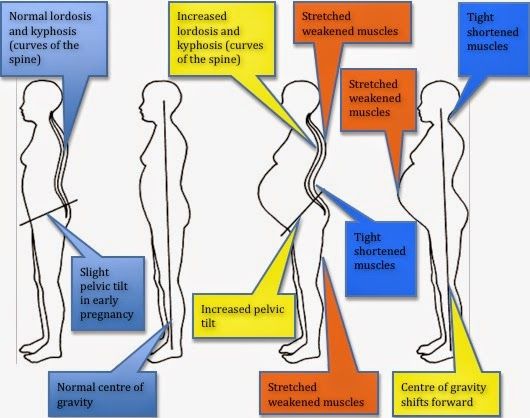 This could be a symptom of preeclampsia, which requires immediate treatment to protect you and baby.
This could be a symptom of preeclampsia, which requires immediate treatment to protect you and baby.
When to Worry (and What’s Perfectly OK)
In the early pregnancy, you may beam from the inside out with bright, rosy skin and hair that brilliantly glistens for days. Then, one day, something takes the wind out of your prego-beauty sails — you look down and don’t even recognize the two extremely puffy cankles beneath you.
Unfortunately, swelling falls into that perfectly normal category of pregnancy side effects. In fact, most expecting mamas experience it. But why?
Let’s look at what causes swelling during pregnancy and offer some tips to beat the bloat with comfort and confidence.
And, a note of caution: There are a few instances in which swelling during pregnancy is concerning. We’ll also explain when it could be a sign of a more serious health condition.
During pregnancy, your body does some pretty herculean things, and there’s a lot that, well, increases. One of them is the sheer amount of fluid in your body. While pregnant, your total body water volume can increase by up to 8 liters— that’s over 33 cups!
One of them is the sheer amount of fluid in your body. While pregnant, your total body water volume can increase by up to 8 liters— that’s over 33 cups!
Meanwhile, your plasma volume leaps 30 to 50 percent, which means your total blood volume increases as well.
So, where does all that fluid go? Good question.
Some of the water stays within your cells to help them function. The rest accumulates outside of your cells to enhance oxygen delivery, clear waste, and control electrolyte flow.
The increase in plasma is in response to the growing needs of the placenta and your maternal organs, as your blood volume increases to deliver all that your baby needs to develop.
As your little one inches closer to birth in the third trimester, your blood volume reaches its peak. Hint: That’s why your swelling (among other slight unpleasantries) can peak around this time.
But that’s not all.
The massive increase in body fluids during pregnancy is coupled with increasing sodium levels. And most of us have seen the effects of what a little too much takeout pizza can do.
And most of us have seen the effects of what a little too much takeout pizza can do.
Sodium affects how your body absorbs and processes water. Even the slightest rise in sodium may cause you to feel the power of the “puff.”
It’s completely normal to shed a little tear the day your rings and favorite heels don’t fit anymore (sigh). A little gradual swelling in your fingers, legs, ankles, and feet throughout pregnancy is part of the journey.
You may find that your swelling tends to worsen toward the end of the day. This is because the extra fluid in your body can gather in the parts of your body farthest from your heart. A hotter, humid day or a lot of standing can contribute to some normal swelling, too.
Moving into the second and third trimesters, more pressure from your little one’s growing size — in addition to more blood volume — may further affect blood flow in your legs, ankles, and feet, causing you to experience even more swelling.
Tips to relieve normal pregnancy swelling
Sometimes, swelling may be as inevitable as that supersonic sense of smell and burning indigestion that you take in stride with the pure joys of pregnancy.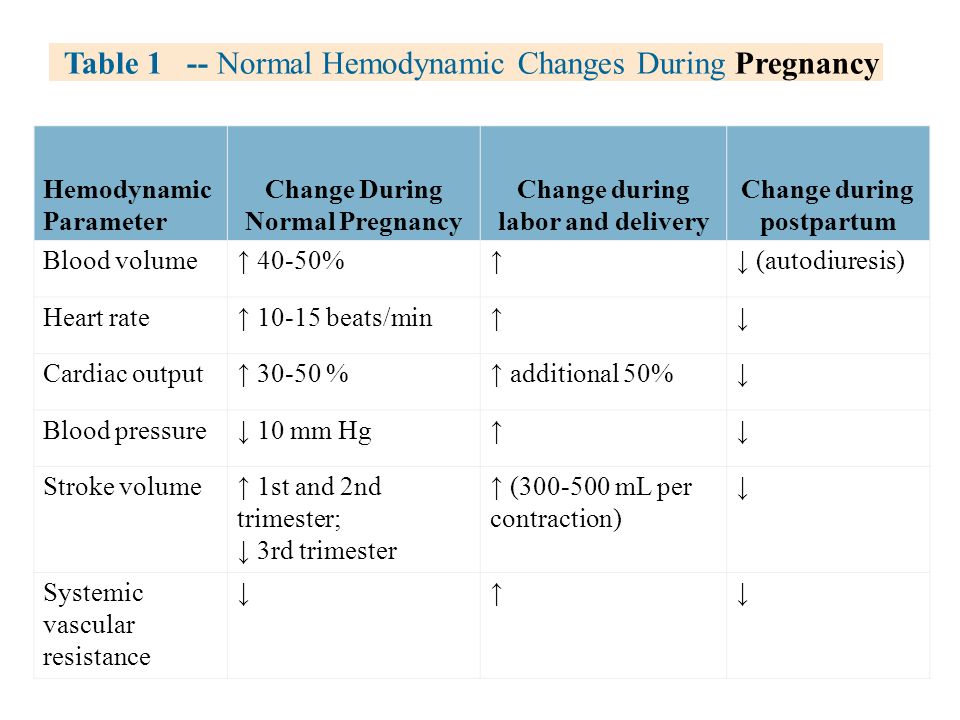 However, here are a few things that you can do to help prevent or ease it.
However, here are a few things that you can do to help prevent or ease it.
- Elevate your feet at a level above your heart throughout the day, as this helps the fluid circulate back to your heart.
- Drink more water to flush extra fluid and sodium out of your body.
- Wear compression stockings to improve circulation, especially if you’re taking a long flight.
- Avoid being outdoors in very hot and humid weather.
- Take frequent breaks to elevate your feet when standing for long periods.
- Avoid heels and wear comfortable, breathable, and supportive shoes.
- Eat more foods with potassium, such as bananas and avocados, to flush out sodium and increase urine production (yes, even more).
- Limit high salt foods, such as prepackaged meals, fast food, and chips.
We know every mama bear wants to know when to panic. The answer? Never. Panicking only boosts your emotional and physical stress. Instead, feel empowered by learning when to call your OB-GYN or midwife about swelling.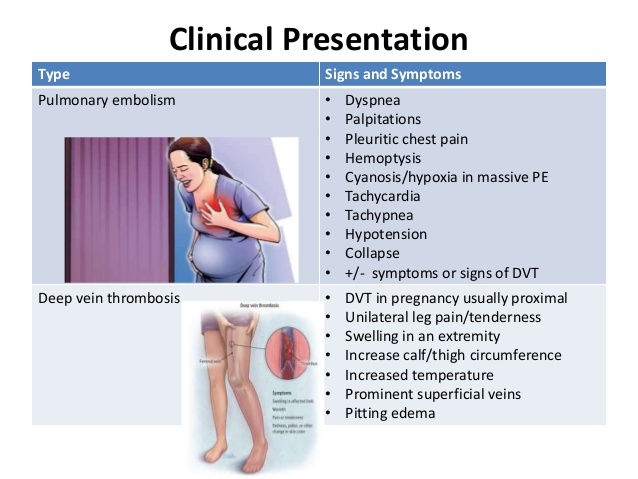
The two most concerning conditions during pregnancy that can cause swelling are preeclampsia and a blood clot.
First thing to remember: These conditions aren’t common, but the risk is real during pregnancy. Therefore, it’s important to be aware of them.
Secondly, swelling associated with these conditions is different than the normal, gradual swelling you may experience over the course of your pregnancy.
Here’s how the swelling is different.
Preeclampsia
Preeclampsia only affects about 5 percent of pregnant women, usually only after the 20th week. The following are three main symptoms of this disorder:
- high blood pressure
- protein in the urine
- edema (a fancy word for swelling caused by excess fluid in the body)
Labs may also show abnormalities in liver enzymes and lower than normal platelet levels.
This relatively rare condition can have devastating consequences for mom and baby if not treated immediately, so it’s important to be aware of the symptoms — and swelling is one of the major ones.
Significant swelling in your hands, face, or around your eyes that comes on suddenly or gradually becomes worse should alert you to call your OB-GYN. If your swelling appears “pitted” — meaning when you push on your skin, an indentation remains — this is also concerning.
In preeclampsia, swelling might be accompanied by a persistent headache, vision changes, abdominal pain, and sudden weight gain. If you have any of these symptoms, call your OB or midwife immediately. They may advise you to go to your nearest emergency room.
Blood clots
Pregnancy is a risk factor for blood clots in the leg, thigh, or pelvis called deep venous thrombosis (DVT). A 2017 review states that pregnancy alone increases a woman’s risk of DVT fivefold. The risk is consistent throughout every trimester and even up to 12 weeks after delivery.
DVT is a serious condition during pregnancy and warrants immediate treatment, as it may cause a pulmonary embolism (PE), which can be fatal.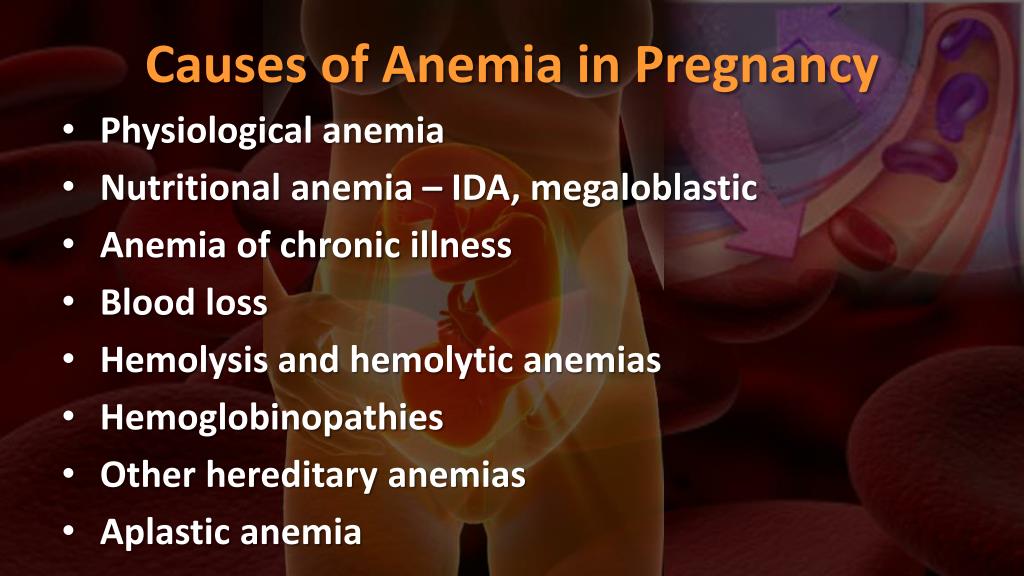
To protect mom and baby, it’s important to catch a DVT by knowing the symptoms. Swelling affecting only one leg is a big one.
Swelling related to DVT often occurs with other symptoms affecting the same area, such as:
- significant pain
- tenderness
- redness
- warmth to the touch
If you have any of these symptoms, call your OB or midwife immediately and follow their direction.
Reducing normal pregnancy swelling is nice but not always possible — and that’s OK.
It’s more important to do what you can to prevent serious complications like preeclampsia and blood clots. Again, though, prevention isn’t always possible and early recognition is key. That said, here are some tips that might decrease your risk.
How to lower your risk of preeclampsia
A limited number of studies have demonstrated proven ways to prevent preeclampsia.
While supplementation with vitamins C and E has been researched as a possible preventive measure, a study in 2007 concluded that antioxidant supplementation with these vitamins shouldn’t be recommended for preeclampsia prevention during pregnancy.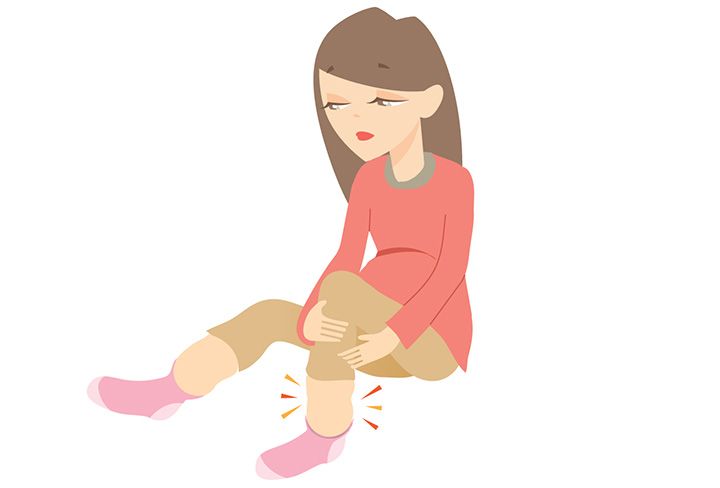
Moreover, while some studies have demonstrated a possible connection between prenatal physical activity and a reduced preeclampsia risk, more studies are needed to confirm this relationship.
It’s most important to know your risk factors so your obstetrician can monitor you more closely if necessary.
Some risk factors for preeclampsia include:
- chronic high blood pressure before pregnancy or during a previous pregnancy
- kidney disease before pregnancy
- personal or family history of preeclampsia
- having overweight or obesity
- having a multiple gestation pregnancy (more than one baby)
- being over age 40
- being pregnant with your first baby
- pregestational and gestational diabetes
- being of African American ethnicity
For women with a history of preeclampsia, low-dose aspirin has been cited as an effective secondary prevention strategy. Aspirin to prevent preeclampsia in women with a high risk but no personal history is still under debate.
How to lower your risk of blood clots
Like preeclampsia, preventing blood clots during pregnancy, childbirth, and the 3-month period afterward starts with knowing your risk factors, such as:
- personal or family history of blood clots
- personal family history of a blood clotting disorder
- history of a cesarean section, also known as a C-section
- immobility or long-term bed rest
- certain pregnancy or childbirth complications
- having diabetes, heart disease, or a lung condition
Your OB or midwife can work with you to help reduce your risk by developing a personalized prevention plan. Here are some easy everyday things you can do, too:
- drink plenty of water
- move your legs or get up at least every 1 to 2 hours if you’re sitting a lot
- exercise as recommended by your doctor
- use compression socks or stockings if recommended by your doctor
- take prescribed medications as directed
If growing feet coincide with your growing belly, you’re certainly in very good company.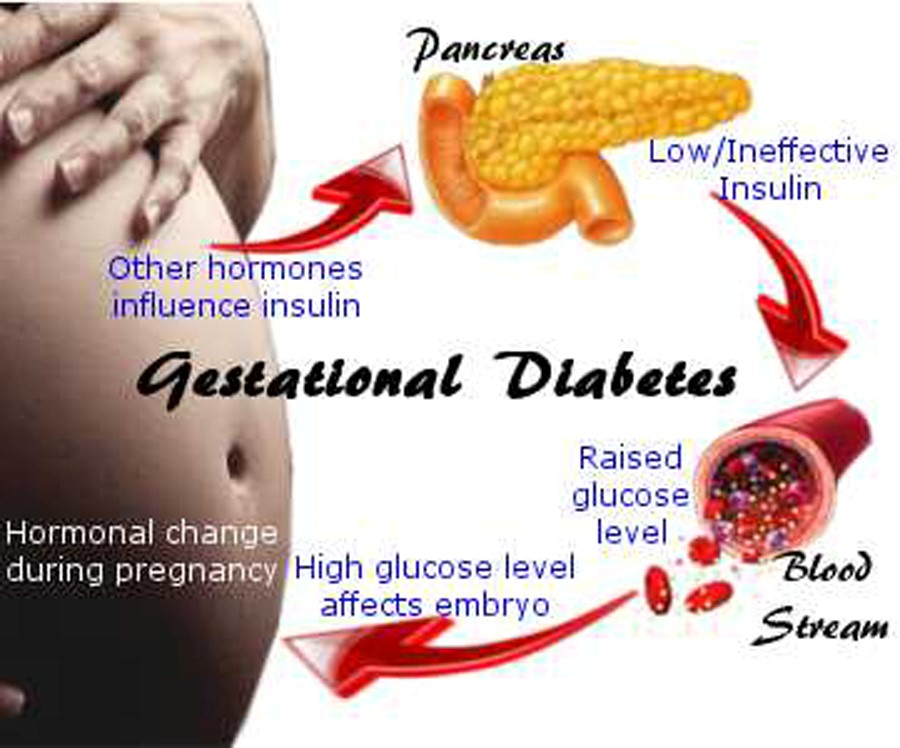 There’s a normal level of swelling that affects most expecting ladies.
There’s a normal level of swelling that affects most expecting ladies.
Normal swelling can peak in the third trimester, affecting the legs mostly. Some simple elevation and R&R with a big glass of water may be all that you need to calm your cranky cankles.
In rarer cases, swelling is a sign of something more serious. If swelling affects only one leg and is accompanied by pain, redness, or warmth, a blood clot could be a concern, and you should call your doctor.
If you experience sudden or gradually worsening swelling in your face, around your eyes, or in your hands accompanied by high blood pressure, call your doctor immediately. This could be a symptom of preeclampsia, which requires immediate treatment to protect you and baby.
Edema during pregnancy | Nutriclub
What you need to know about edema: why they appear, how to deal with them, how to distinguish ordinary physiological edema from a symptom of a serious illness
It is believed that edema inevitably accompanies the pregnancy of most women - you just need to endure their unaesthetic appearance. However, swelling can be a signal of health problems and pose a danger to both the expectant mother and the development of the fetus. Nutriclub understands when to worry if you have swelling.
However, swelling can be a signal of health problems and pose a danger to both the expectant mother and the development of the fetus. Nutriclub understands when to worry if you have swelling.
- Edema - excessive accumulation of fluid in the interstitial space - occurs quite often in pregnant women. Swelling can occur at any time and in different parts of the body.
- Edema on the face (especially bags under the eyes and severe swelling of the eyelids) are especially noticeable and cause maximum dissatisfaction, because they directly affect the appearance.
- Very often, pregnant women have swollen legs, especially after a long walk. That is why it is so important to get comfortable shoes for the entire period of pregnancy.
- Hands tend to swell in women who work at a computer or do needlework. Rings begin to press, fingers look like “sausages”. In such cases, you need to temporarily abandon jewelry.
- Pregnant women often mistake swelling of the nasal mucosa for a runny nose or allergies.
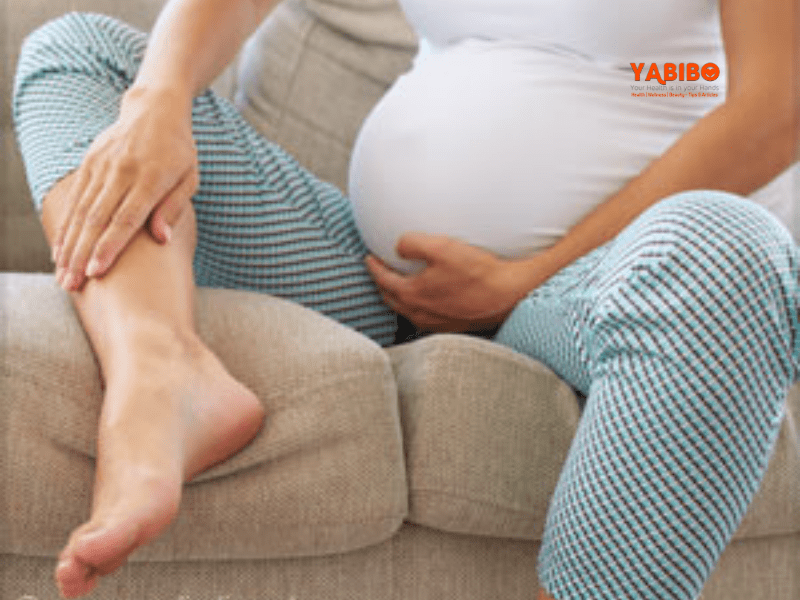 The latter is more likely because allergic reactions tend to get worse during pregnancy. Also in pregnant women, due to changes in hormonal levels, a condition called rhinitis of pregnancy can develop, which is accompanied by severe nasal congestion. It is better to take tests and be sure to discuss the situation with a doctor who will prescribe a drug that is allowed during pregnancy. Ignoring nasal congestion is not recommended - breathing problems in the mother can make it difficult for oxygen to reach the child.
The latter is more likely because allergic reactions tend to get worse during pregnancy. Also in pregnant women, due to changes in hormonal levels, a condition called rhinitis of pregnancy can develop, which is accompanied by severe nasal congestion. It is better to take tests and be sure to discuss the situation with a doctor who will prescribe a drug that is allowed during pregnancy. Ignoring nasal congestion is not recommended - breathing problems in the mother can make it difficult for oxygen to reach the child.
All these edemas can be both physiological and pathological.
Physiological edema of pregnant women
Physiological usually do not cause complications. They are explained by natural changes in the body of the expectant mother: the uterus puts pressure on neighboring organs, slowing down blood circulation, and sodium accumulates in the blood - it slows down the excretion of fluid from the body. At the same time, during pregnancy, the total amount of fluid circulating throughout the body almost doubles (part of it is contained in the amniotic fluid and placenta).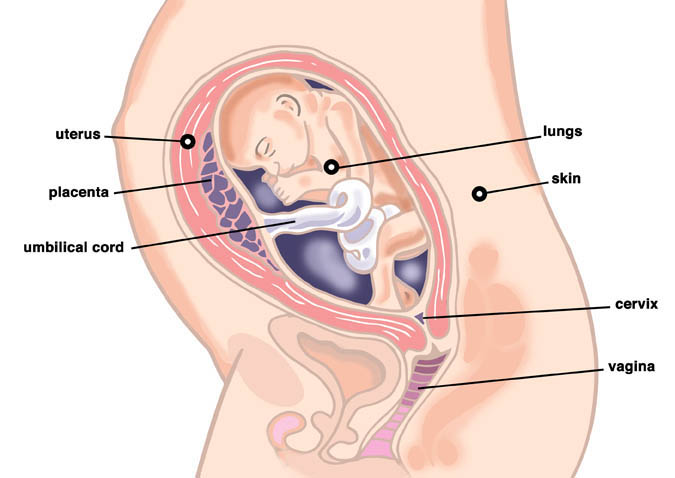
At the same time, a woman's hormonal background changes, which may be the cause of the legendary “salty” craving, which, in turn, provokes thirst and excessive fluid intake.
Summer heat or stuffiness in transport and premises, physical overload also affects health and appearance.
Physiological edema is considered natural at any stage of pregnancy - and does not pose a threat to the woman's health.
But at the first sign of swelling, you should definitely contact your obstetrician-gynecologist. The doctor will prescribe the necessary examinations and tests to exclude pathological edema, indicating health problems and complications of pregnancy.
Pathological edema during pregnancy
Pathological edema in the early stages may signal hypothyroidism - a condition in which there is a lack of thyroid hormones in the body. Doctors try to identify the disease before the appearance of swelling - pregnant women with a deficiency or excess body weight, with severe toxicosis, a blood test for thyroid hormones is prescribed.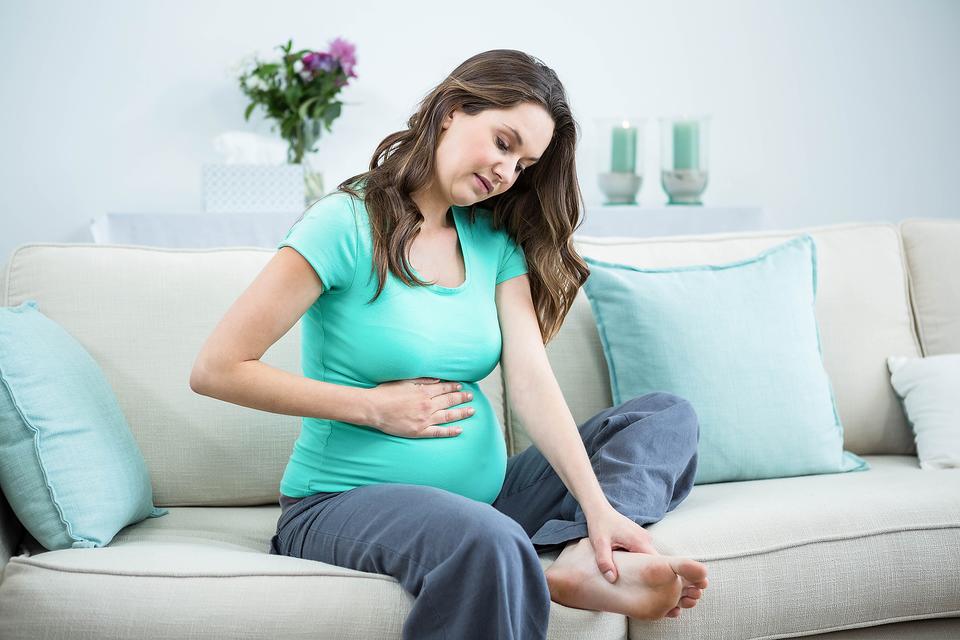 If the results are not normal, treatment is prescribed.
If the results are not normal, treatment is prescribed.
Also, starting from the first trimester, edema may appear due to problems with the kidneys. It is very important to take a urine test every two weeks, as recommended in the antenatal clinic. Erythrocytes, high leukocytes, a protein that should not be in the urine - a reason for referral to a urologist and ultrasound of the kidneys. It is important to exclude an infection in the kidneys, and if it is diagnosed, it should be treated qualitatively. Otherwise, premature obstructed labor or the birth of a child with a low weight are possible.
Starting from the 20th week, swelling may indicate varicose veins. Circulatory disturbance due to uterine pressure leads to the formation of "knots" and pain in the legs. If you suspect varicose veins, you will be referred to a phlebologist who will give the necessary recommendations.
Edema also accompanies heart failure, which is considered a serious complication of pregnancy.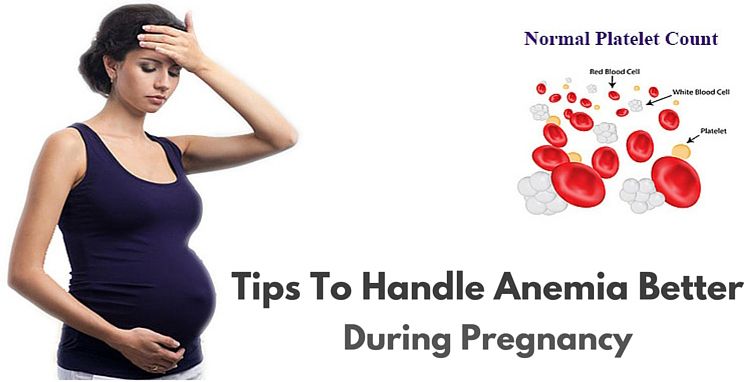 In this case, the appearance of edema is preceded by shortness of breath and cyanosis of the mucous membranes.
In this case, the appearance of edema is preceded by shortness of breath and cyanosis of the mucous membranes.
However, most often, pathological swelling indicates late toxicosis - gestosis. This is a problem in the third trimester of pregnancy, but the first signs can begin to appear between the 18th and 20th weeks. Preeclampsia almost always requires the help of a doctor and the presence of a pregnant woman in a hospital.
What is gestosis and why is it dangerous?
However, gestosis, in addition to edema, has other symptoms: high blood pressure, protein in the sea (it is normally absent), nausea, vomiting, headaches, convulsions, fever, drowsiness, or, conversely, severe arousal.
There are four degrees of preeclampsia. The first degree is known as dropsy of pregnant women, it is mainly expressed in edema. The second degree is edema, protein in the urine, a violation of pressure. The third degree of preeclampsia is called preeclampsia. It is characterized by a decrease in cerebral circulation and even hemorrhage. In the most severe, fourth stage of the disease, convulsions (eclampsia) are observed. A pregnant woman may have a stroke or placental abruption.
In the most severe, fourth stage of the disease, convulsions (eclampsia) are observed. A pregnant woman may have a stroke or placental abruption.
Thus, even if everyone around them says that edema is completely natural, and they do not cause discomfort to the pregnant woman herself, it is very important to inform the doctor about the first appearance of swelling - precisely in order to make sure that the edema is physiological, and not pathological, and no complications for the development of the fetus and the process of childbirth will not entail.
When should a pregnant woman see a doctor immediately?
The following problems can be considered the reason for an urgent visit to a doctor:
- swelling visible already in the morning, immediately after getting up;
- edema accompanied by high blood pressure;
- edema becomes very severe: it is impossible to clench the hand into a fist, shoes are painful and uncomfortable to wear, it is difficult to open the eyes due to swelling;
- regular shortness of breath, palpitations;
- headaches do not go away for several days;
- regularly experience nausea and vomiting after the 12th week;
- Urges for small needs are rare and are accompanied by the release of urine of a dark color;
- there are pains in the upper part of the abdomen;
- painful convulsions appear;
What helps with swelling during pregnancy?
If, according to the results of examination and analysis, it is established that the edema is physiological, it is possible to get rid of them (or at least reduce them) using the following methods.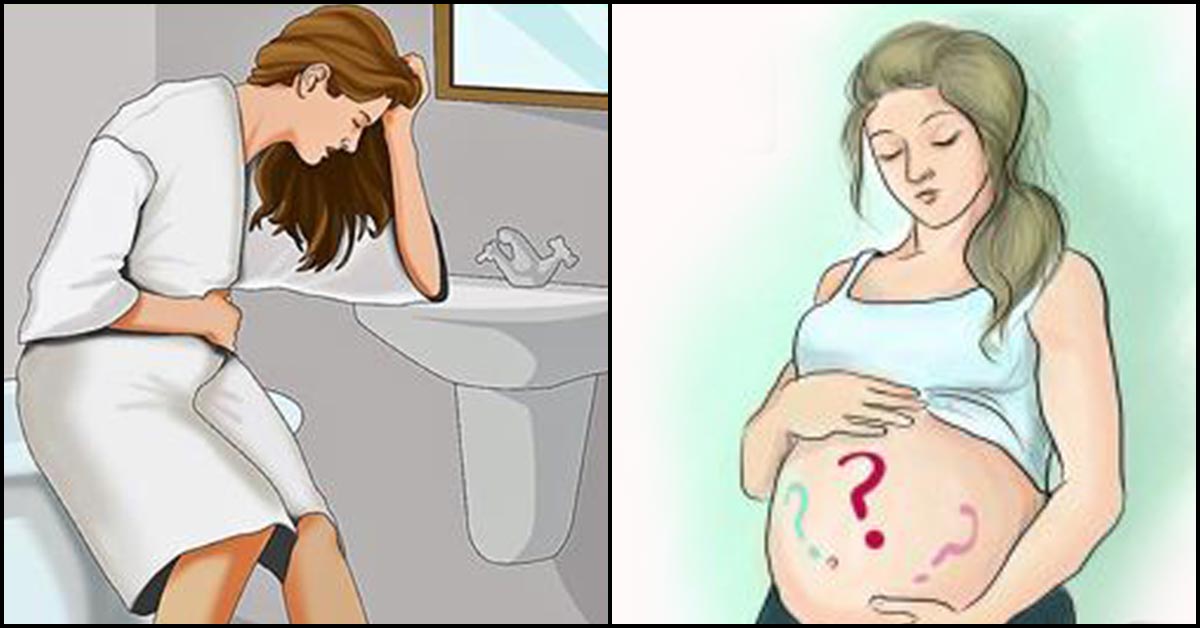
- Avoid fried, smoked, spicy, pickled and sweet foods. Steam or bake, eat fruits and vegetables regularly.
- The use of salt should be limited - it contains sodium, it is he who retains fluid in the body.
- Many advise to limit the use of water, even in the form of broth. In fact, it threatens with dehydration. It is better to drink plain water in small sips - and consume most of the daily allowance of one and a half to two liters in the morning. Soda should be excluded.
- It is contraindicated to stay in heat or stuffy rooms for a long time.
- On the recommendation of a doctor, you can wear special compression underwear, while giving up tight tights, uncomfortable shoes and heels.
- Sleep at least 8-10 hours. It is also recommended to lie down every day for 15-20 minutes with legs raised up, do foot massage and foot baths with sea salt.
When using any materials from the site nutriclub.ru, a link to the site is required.

© Nutriclub, 2020
You will also be interested
- Nutriclub - healthy nutrition and child development
- Pregnancy
- Mom's health and well-being
- Edema during pregnancy | Nutriclub
what to do if legs and arms swell during pregnancy
Edema during pregnancy, few people manage to avoid. According to various sources, only a fifth of future mothers are lucky. For the rest, this unpleasant phenomenon causes a lot of moral and physical suffering. What to do? Let's try to explain.
What is edema?
Edema is an excess of fluid in the tissues. The place where it accumulates looks swollen, puffy. In the early stages, the problem is almost imperceptible or it does not exist at all, which cannot be said about edema during pregnancy in the second and third trimesters.
Pay attention! Hot flashes during early or late pregnancy and swelling are two different things! In the first case, we are talking about a sudden fever (less often chills), and not about the accumulation of fluid.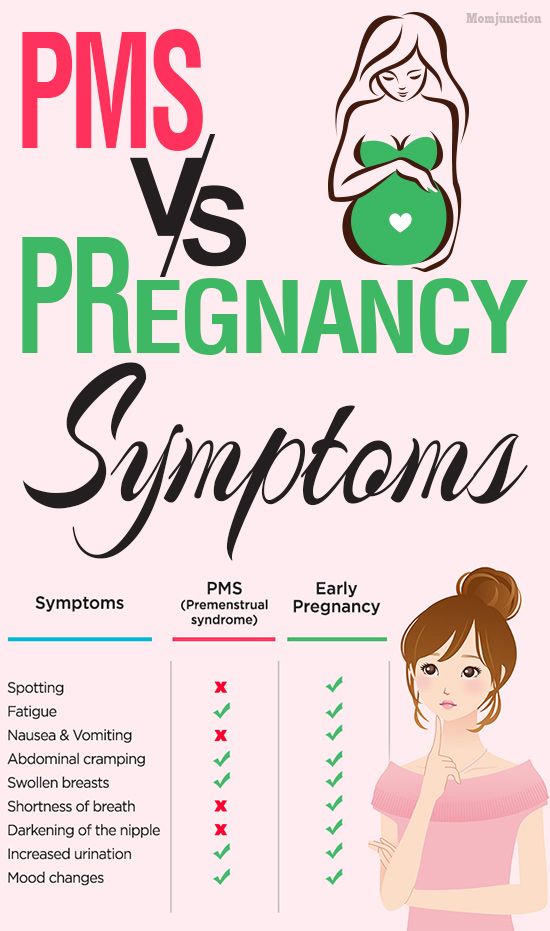
Why pregnant women have swollen legs
In fact, understanding the cause of edema is very important, because they are both natural and pathological. The latter are quite rare, but are the causes of severe violations.
Natural or physiological edema during pregnancy begins due to a changing hormonal background, when sodium salts linger in the tissues and do not go away. In another version, the growing uterus, while the woman is lying, occludes the inferior vena cava and does not allow blood to leave the femoral veins.
Pathological swelling during pregnancy may indicate the presence of:
| Disease | Description |
| Deep vein thrombosis | Blockage of the vessel, which leads to death. Risk factors: trauma, venous insufficiency, smoking, physical inactivity, oncology. |
| Preeclampsia | It occurs in approximately 2% of pathological edema. |
| Phlegmon | Acute infection, usually caused by streptococci; characterized by skin lesions and inflammation of the subcutaneous tissue. |
Types and features of edema
Edema begins in the lower extremities and gradually moves up to the face. We’ll talk about the dangers of edema during pregnancy a little later, but for now it’s worth understanding if there is any difference between them at different times. Note that we will talk about pathological situations when the accumulation of fluid exceeds the norm by 30%.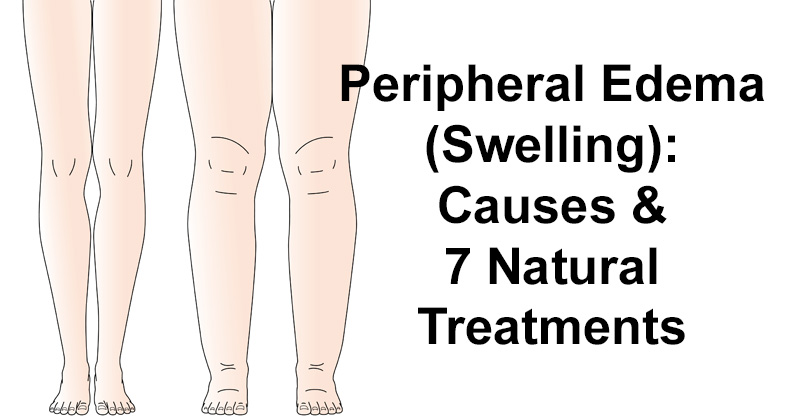
Early
Edema is not as common in early pregnancy. The weight of the child and the volume of the uterus are not yet so large as to interfere with the full functioning of the body. However, if they occur, then you should pay the attention of your doctor to this, since such deviations may indicate serious illnesses. In particular:
- hypothyroidism - insufficient production of thyroid hormones.
- kidney problems - that is why it is very important to take urine for analysis every two weeks.
Second trimester
In the middle of pregnancy, this pathology can signal the onset of varicose veins, in which case the doctor will send the woman for a consultation with a phlebologist.
Another pathology that causes the disease is heart failure. The disorder is also accompanied by shortness of breath and cyanosis of the mucous membranes. Such problems will have to be treated together with a cardiologist.
But a much bigger problem when carrying a baby is preeclampsia.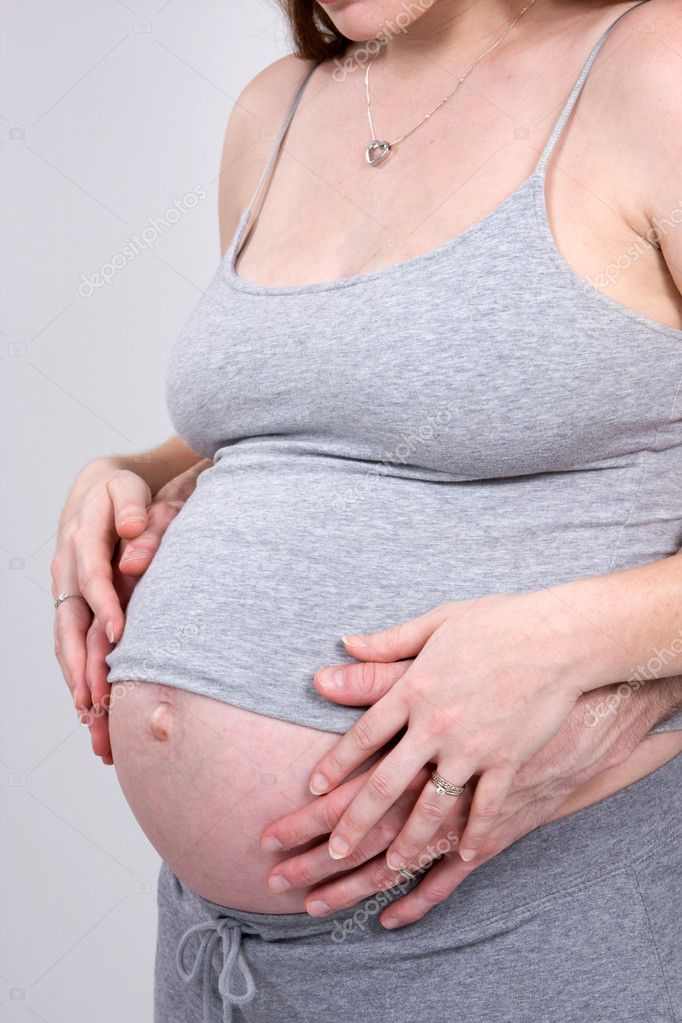 Its onset can be seen already at 18-20 weeks, although the disease is gaining full strength in the third trimester. It will only have to be treated in a hospital.
Its onset can be seen already at 18-20 weeks, although the disease is gaining full strength in the third trimester. It will only have to be treated in a hospital.
Late term
Here it is worth dwelling in more detail on gestosis. So called late toxicosis. Together with edema, a woman is tormented by high blood pressure, nausea, vomiting, convulsions, drowsiness, weakness, fever, or excessive emotional arousal, which affects the physical condition.
The condition has four levels of severity:
| Severity | Description |
| 1 degree | edema directly |
| 2 degree | protein in the urine and problems with pressure are added to them |
| 3 degree | preeclampsia |
| 4 degree | eclampsia, in which strokes and placental abruption are possible |
Case study:
A woman was observed in our hospital with complaints of severe swelling of the legs during pregnancy. The lower limbs were indeed swollen, which was noticeable to the naked eye. During the survey, it turned out that the woman's blood pressure began to rise regularly. Since she was already in her 3rd trimester, the patient was recommended to immediately go to the hospital for preservation and additional examination. As a result, the patient was diagnosed with preeclampsia.
The lower limbs were indeed swollen, which was noticeable to the naked eye. During the survey, it turned out that the woman's blood pressure began to rise regularly. Since she was already in her 3rd trimester, the patient was recommended to immediately go to the hospital for preservation and additional examination. As a result, the patient was diagnosed with preeclampsia.
How to get rid of swelling during pregnancy
Physiological edema can be prevented or at least reduced. For this you need:
- reconsider your diet - there should not be fried, smoked, salty or spicy.
- treat water more carefully - drink only clean, non-carbonated and, preferably, most of it before lunch.
- less to be in the heat and in stuffy rooms - you will certainly want to drink.
- wear comfortable shoes.
- lie down daily for about half an hour so that the legs are located above the head.
- walk more - light physical activity is good for everyone, but in this case there is a need for the approval of a doctor.

Your doctor may give you other recommendations. It is important to take into account all the factors of pregnancy and choose the most effective therapy within the given framework. Our doctors can advise you remotely and draw up the right treatment regimen.
FAQ
Swollen legs during pregnancy - how to fix?
+
You need to discuss this with the doctor who manages the pregnancy. Edema can be both physiological - then you will simply be given a number of recommendations for their elimination, and pathological - when it comes to certain disorders in the body.
What is "internal edema" during pregnancy?
+
Internal or hidden edema during pregnancy is invisible externally. Here we are talking about swelling of the internal organs. A violation is calculated by exceeding the norm of weight gain in the last terms.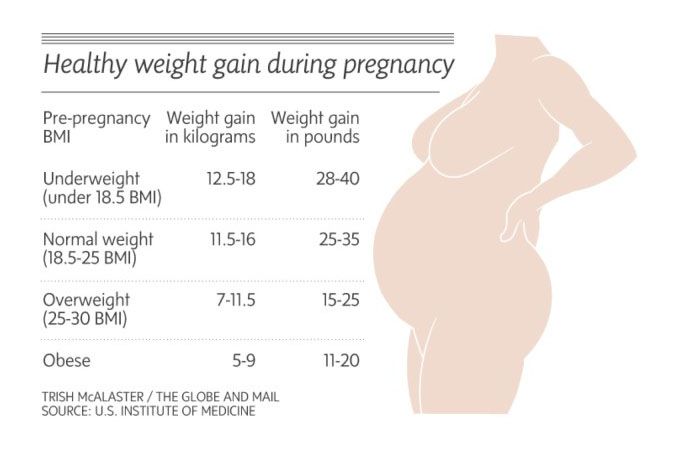
How to eliminate swelling at 37-39 weeks of pregnancy?
+
Follow the recommendations of the doctor and, if necessary, undergo a course of treatment. In any case, your doctor will answer all questions in more detail. Do not self-medicate.
We publish only verified information
Article author
Menshikova Maria Viktorovna obstetrician-gynecologist
Experience 38 years
Consultations 1816
Articles 46
Specialist with extensive practical experience.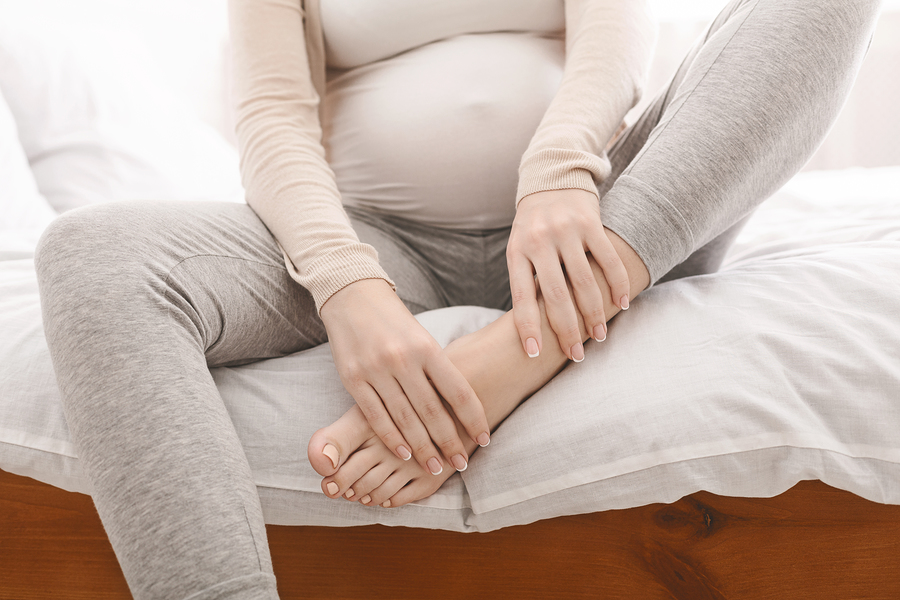
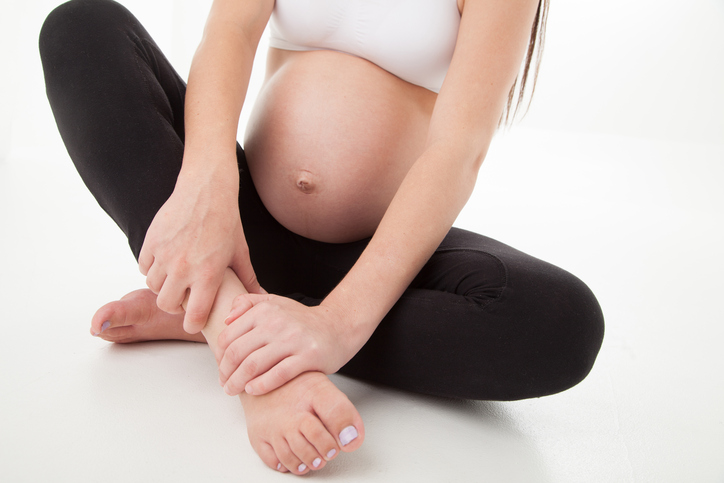 It is characterized by increased blood pressure and high levels of protein in the urine. The disease has varying degrees of severity. The most terrible consequences are a stroke, the death of a mother or child, fetal pathology. Risk factors: chronic hypertension, adolescence or women over 35 years of age, hereditary predisposition, first or multiple pregnancies, diabetes mellitus, etc.
It is characterized by increased blood pressure and high levels of protein in the urine. The disease has varying degrees of severity. The most terrible consequences are a stroke, the death of a mother or child, fetal pathology. Risk factors: chronic hypertension, adolescence or women over 35 years of age, hereditary predisposition, first or multiple pregnancies, diabetes mellitus, etc. 